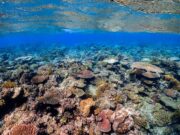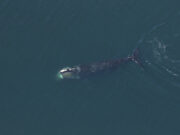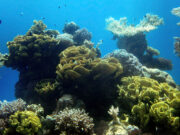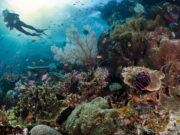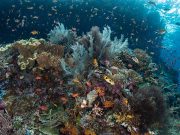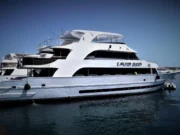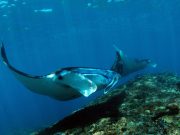Until recently there was thought to be only one species of Manta Ray: Manta birostris. Now though, researchers have observed that there are actually two: the Reef Manta Ray (Manta alfredi) and the Giant Manta Ray (Manta birostris). Both of these species have been classified as vulnerable in the IUCN Red List which was published this month.
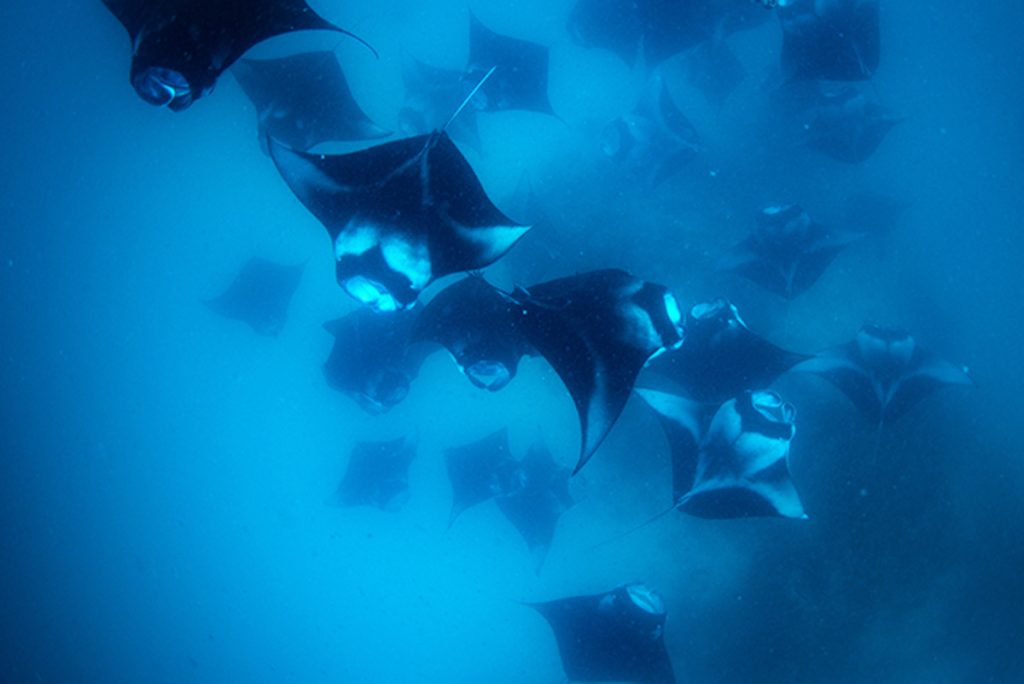 Image: DepositPhotos
Image: DepositPhotosGrowing to more than seven meters across, the Giant Manta Ray is the largest living ray and a very impressive sight underwater. The Reef Manta Ray is smaller but still reaches 5 m across.
Mantas migrate vast distances, crossing international boundaries, in search of food. Products from manta rays have a high value in international markets, and targeted fisheries hunt them for their valuable gill rakers used in traditional Chinese medicine. Monitoring and regulation of the exploitation and trade of both manta ray species is urgently needed, as well as protection of key habitats.
 Image: Deposit Photos
Image: Deposit PhotosBoth species of Manta are found around the globe, their ranges overlapping in some places like Mozambique. It is difficult for a diver to distinguish between the two species. Both can be shades of black or white. They are also sometimes confused with the devil rays of the genus Mobula.
Completely harmless filter-feeders, Mantas use their head fins to direct plankton into their mouths. As plankton occur near the surface of the seas, that’s where Mantas are also found. Filtering your food out of the oceans doesn’t take much energy, which is why Manta rays can be so large.
 Image: Deposit Photos
Image: Deposit PhotosThe Giant Manta Ray appears to be a seasonal visitor to coastal or offshore sites. While this species seems more solitary than the Reef Manta Ray, Giant Manta Rays are often seen aggregating in large numbers to feed, mate, or clean. Sightings of these giant rays are often seasonal or sporadic but in a few locations their presence is a more common occurrence. At certain times of the year you can see the Giant Manta Ray at aggregation sites such as the Similan Islands, Thailand; northeast North Island, New Zealand; Laje de Santos Marine Park, Brazil; Isla de la Plata, Ecuador; Cocos Island, Costa Rica; and Isla Holbox, Mexico. Being oceanic, you see them less frequently than the Reef Manta Ray.
The Reef Manta Ray is found from the Sinai Peninsula in the Red Sea to Durban, South Africa in the Western Indian Ocean, and from Thailand to waters off Perth, Western Australia in the Eastern Indian Ocean. Reef Manta Rays do not commonly venture from coastal waters, often moving between inshore cleaning stations and feeding areas. The Reef Manta Ray can reach 5 m across, however, in most mature individuals do not exceed 4 m.
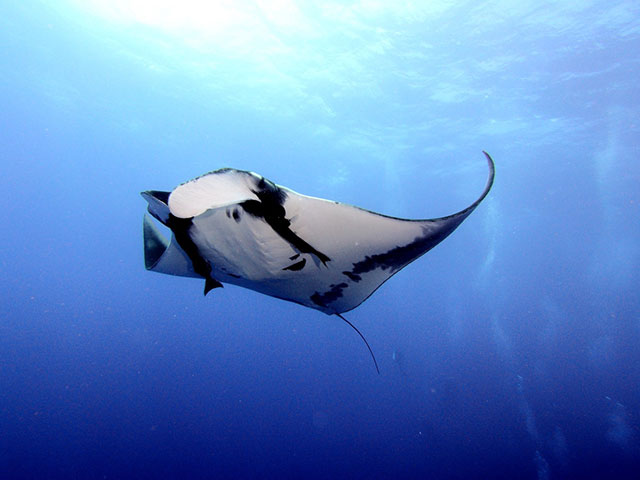
Another factor which adds to the vulnerability of the Manta ray is its low reproductive rate. In the wild, females bear on average only a single pup every two to three years. Female mantas are thought to mature at around 8 to 10 years of age and to live to around 40 years.
Dive tourism involving Mantas is a growing industry and can significantly enhance the economic value of such species in comparison to short-term returns from fishing. However, tourism related industries can also negatively impact individual behaviour, entire populations and critical habitat. Tourism needs to be developed responsibly, with the needs of the animals respected.
Manta and devil ray catch increased from 900 tonnes to over 3,300 tonnes between 2000 and 2007.
Further Reading:
Red List: Reef Manta Ray, Manta alfredi
Red List: Giant Manta Ray, Manta birostris
Coral Reef Guide Red Sea by Ewald Lieske and Robert F. Myers
Image credits:
- Manta rays Maldives: DepositPhotos
- manta-ray-divers: Deposit Photos
- Giant manta rays: Deposit Photos


